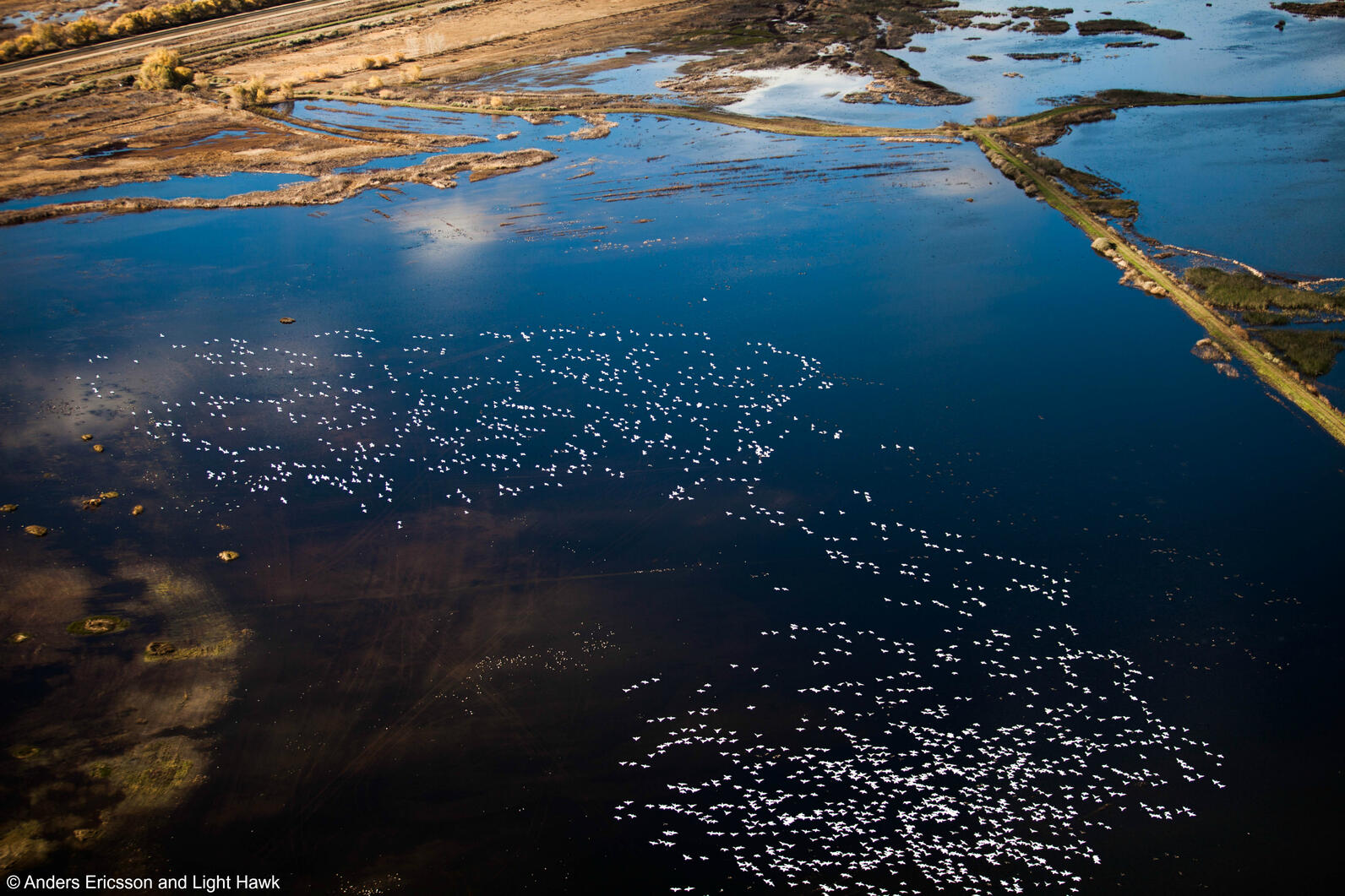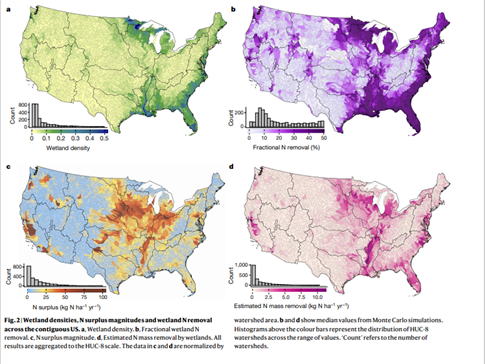Audubon has long worked to protect, restore, and enhance wetlands throughout the United States. We have done this because we know that wetlands provide invaluable habitat for resident and migratory birds, as well as for thousands of other plant and animal species.
We now know that wetlands also play an important role in the overall health of our ecosystem and our communities.
Wetlands can provide flood protection, groundwater recharge, sequestration, pollution filtration, and places for public access. Periodically called, “earth’s kidneys”, these vibrant ecosystems can absorb carbon dioxide helping mitigate climate change and nitrogen cleaning the run-off from human use of the land for agriculture or development.

This past December, a new article in Nature by Cheng et al mapped the nationwide potential for wetland restoration in areas with high nitrogen loading and run-off, typically caused by sewage run-off or fertilizers. Excess nitrogen runoff from farms and cities can cause oxygen depletion in rivers, lakes, and coastal areas driving harmful algae blooms and killing aquatic species by reducing water quality, eliminating food resources in the water bodies, and decreasing oxygen levels that fish and other aquatic species rely on. And it is not just fish that are at risk, too much nitrogen (in the form of nitrate) in water can result in “blue baby syndrome” which can be fatal in infants. The study’s nationwide map clearly highlights the importance and potential for wetland restoration to improve water quality in California’s Central Valley.
A quick glance at the map below and the Central Valley pops out as a priority. The Valley is a place where agriculture and growing urban development are resulting in nitrogen loading into our waterways. Given that we have lost 90% of our wetlands in the Central Valley, the restoration of new wetlands would both improve water quality but also provide much-needed habitat to a wide range of resident and migratory birds.

Wetlands will need to be restored and managed with a close eye on water quality and habitat health to avoid a repeat of what happened at Kesterson Reservoir in the 1980s, where build ups of selenium led to significant bird deaths and deformities. However, we have learned much since Kesterson and can now site and manage wetlands and water sources to restore ecosystem function, as well as capture nitrogen and carbon but minimize the accumulation of toxins such as selenium.
A focus on opportunities for wetland restoration and protection can also help meet Governor Newsom and President Biden’s respective 30 by 30 Executive Orders. It would protect biodiversity, contribute to carbon sequestration, help store and recharge water, and provide access to nature for communities and visitors.
This study is one more argument in favor of restoring and protecting new wetlands in California’s Central Valley, particularly in the San Joaquin Valley, as well as ensuring water and funding for the management of our existing wetlands. This would complement and add to the ongoing efforts by farmers and cities to lower their contributions to the overall nitrogen issues through reduced and targeted use of fertilizers and capturing and cleaning run-off before it enters our lakes, rivers, and streams.
We hope that you will join Audubon in our efforts and advocacy to restore and protect wetlands –not just for the birds but for the health of our communities.



